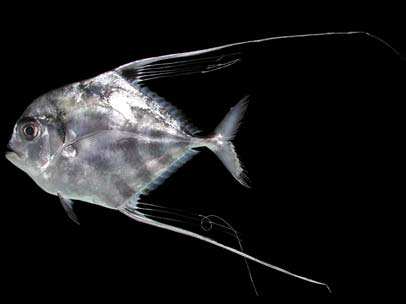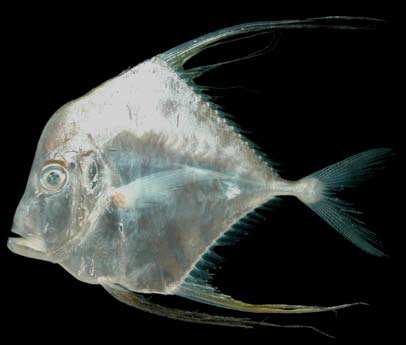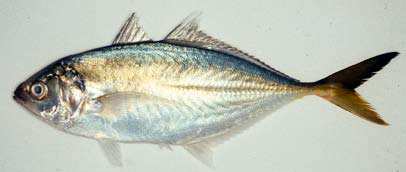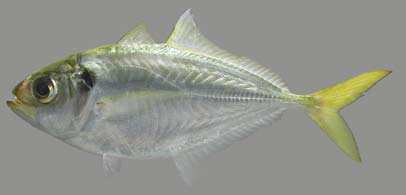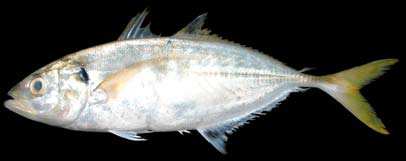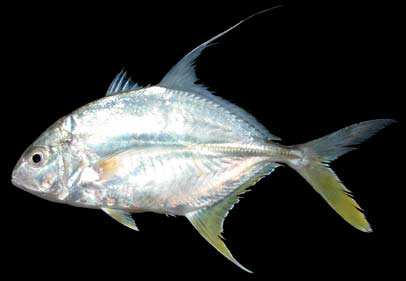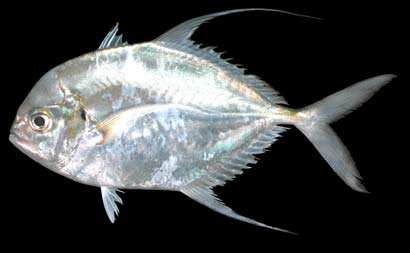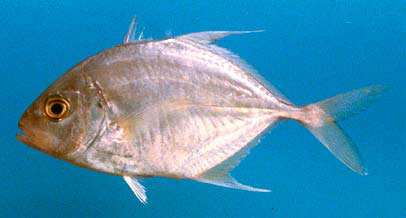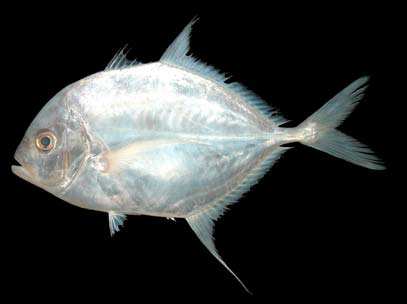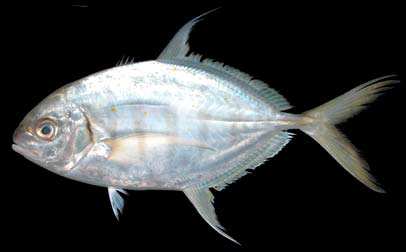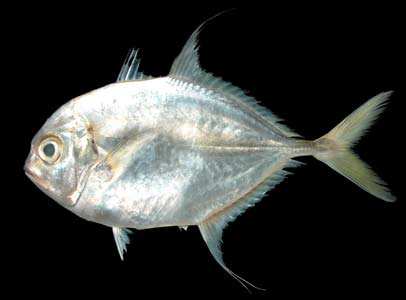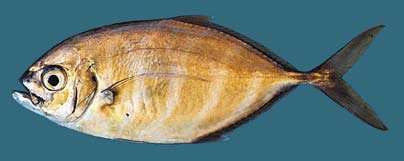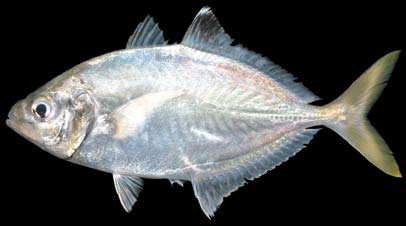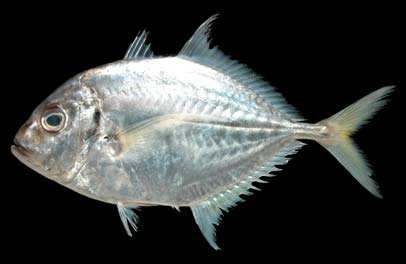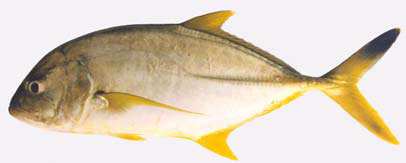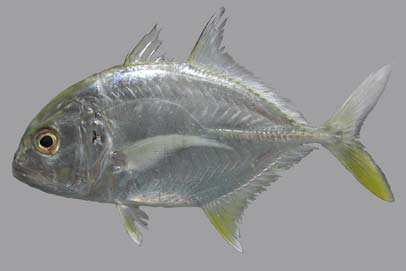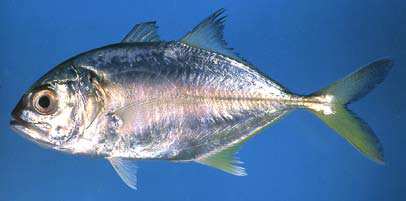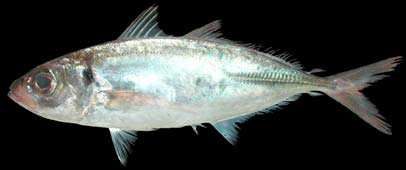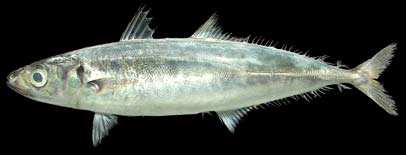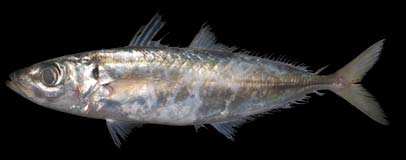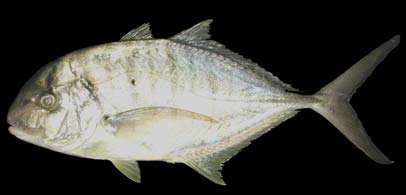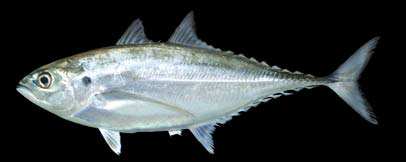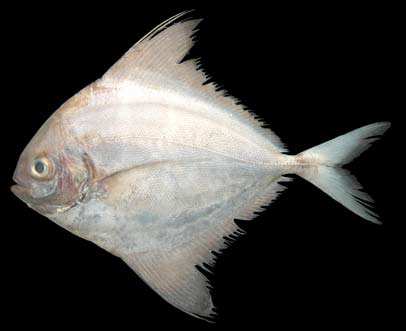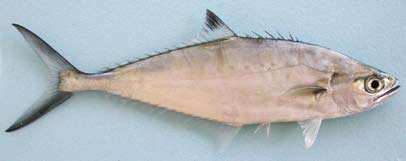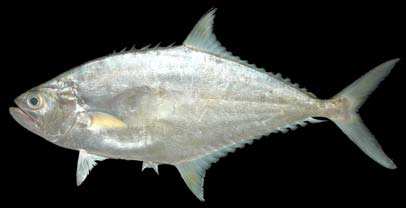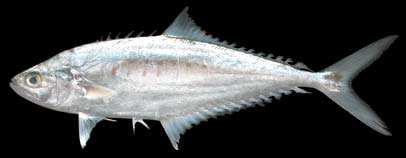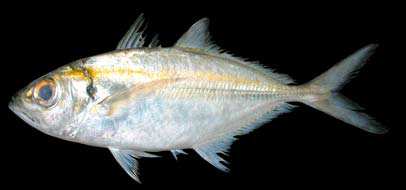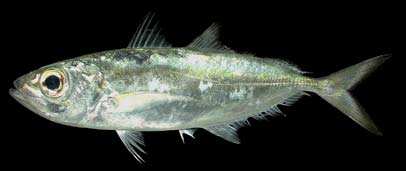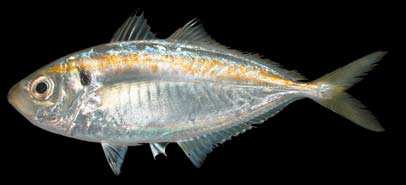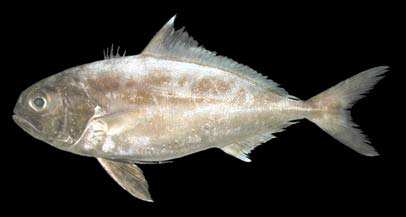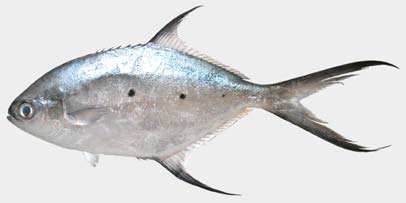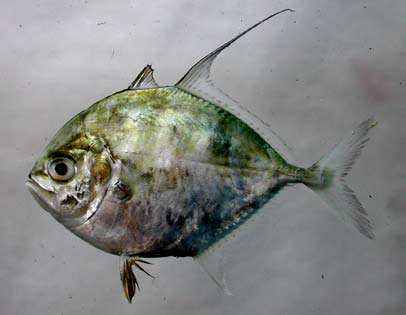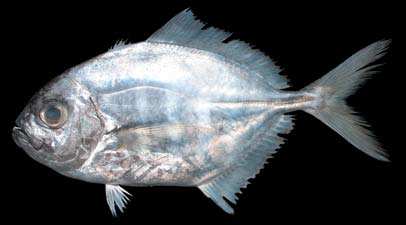CARANGIDAE
Jacks (Scads, Trevallies)
By Seishi Kimura
|
Medium to large sized marine fishes; maximum size about 2 m. Body shape extremely variable, ranging from elongate and fusiform to deep and strongly compressed. Two dorsal fins, the first with IV-VIII spines (obsolete or embedded in adult of some species) and the second with one spine and 17-44 soft rays; anal fin usually with III spines, the anterior two (rarely only one) detached from the rest of the fin (becoming embedded in adults of some species), and 15-39 soft rays; pelvic fin I, 5; caudal fin forked. Scales small cycloid in most species; scutes present and prominent on the lateral line in most species, but reduced in some species and absent in some genera. Vertebral counts 24-27. Color: body silvery, darker (brownish or greenish) dorsally, paler ventrally. Dark bars or spots on body, and/or yellowish fins in some species. Similar families occurring in the area. Carangidae is distinguished from the following similar families in having 2 detached anal fin spines (sometimes completely embedded in adults in several genera), and enlarged scutes along at least posterior lateral line in some genera. Centrolophidae and Lactariidae: no detached anal fin spine; no scutes in the lateral line. Scombridae: dorsal-fin spines IX-XXVII; no detached anal fin spine; no scutes in the lateral line. Stromateid genus Pampus very similar to Parastromateus niger in body shape, but the former lacking a lateral keel of scutes at caudal peduncle. Remarks. Occurring in tropical to temperate marine, estuarine, and sometimes freshwater areas. |

|
|
